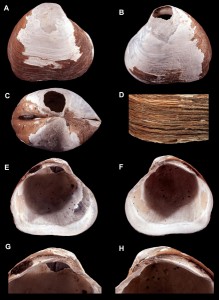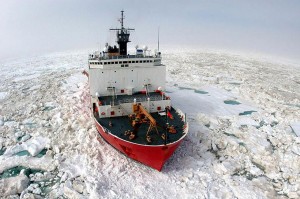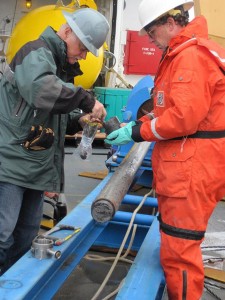During a 2010 expedition in the Beaufort Sea’s deep, Arctic waters off Alaska’s northern coast, scientists discovered what turned out to be a previously-unknown, ancient type of mollusk.
The newly-discovered bi-valve mollusk, called Wallerconcha sarae, dates back about 1.8 million years.

Paul Valentich-Scott, is the curator of malacology, which is the study of mollusks, at the Santa Barbara Museum of Natural History in California. He says the specimens are pretty small – only about an inch across and round-shaped.
“Think of a 1-inch ball bearing, but they’re all white,” Valentich-Scott said. “They do have an outer skin that’s really dark brown and kind of heavy, a little bit hairy-like, actually.”
“And inside, when you open them up, just think of opening up a clam shell that you might eat and they look very much like a clam that you might have for steamers or that kind of thing on the inside.”
This description fits a variety of mollusks, but Valentich-Scott says the specimen does have a few unique traits that warranted both a new species and genus.
“This one had some very unusual characters in the sort of top part of the shell that had not been seen before; so, it’s all shell-based,” Valentich-Scott said. “Since we don’t have an animal, we can’t do any DNA work and compare it that way, we can only compare shells of both fossil species and recent species to this new discovery.”
There are about 75 species of mollusks documented in the region, but Valentich-Scott says new discoveries are rare.
“A few of them have been new, like in the 20th century, but not many,” Valentich-Scott said. “So, in terms of what we know of this group of animals up in the Arctic, this is quite significant.”

Wallerconcha sarae was discovered by scientists on a joint U.S.-Canadian expedition off Alaska’s North Slope aboard the U.S. Coast Guard ice breaker Healy in 2010. Their primary mission was to map the sea floor and sediment below to gain a better understanding of the region’s geology.
Valentich-Scott says the discovery was made when scientists were investigating an interesting spot on the bottom of the Beaufort Sea.
“This is one of the unusual situations where we have essentially an extinct hydrothermal vent system,” Valentich-Scott said. “We’re pretty sure that this was an active vent system somewhere in the 1-2 million years ago.”
The first hydrothermal vents were discovered in the mid-1970s. And since the science is so young, relatively little is known about them. But, by studying this extinct vent system, the picture is gradually becoming a clearer.
Even though researchers only have what are essentially mollusk bones to study, Valentich-Scott says they can still make educated guesses into certain aspects of the animal’s existence based on knowledge of active hydrothermal vents and other comparable mollusk species.

“It probably used the bacteria in the environment of this hydrothermal vent to more or less feed,” Valentich-Scott said. “We know it was a filter-feeding organism and it might have been in fairly warm water, or it could have been a cold seep as well, we’re not quite sure.”
“But, in terms of other types of reproduction or what it did on a daily basis, we just don’t exactly know at this point.”
The shells were found buried as deep as 15 feet in the sea floor’s sediment, but Valentich-Scott says some were discovered much shallower, which opens up some interesting possibilities.
“We also found them within about 1 or 2 inches of the surface of the mud,” Valentich-Scott said. “So, it’s highly suggestive that they could, in the right circumstance, still be found alive.”
There are only about 15 specimens to work with so far, but as scientists delve further into Arctic research, Valentich-Scott believes more will likely be uncovered.
Josh is the Statewide Morning News Reporter/Producer for Alaska Public Media | jedge (at) alaskapublic (dot) org | 907.550.8455 | About Josh




